The Commonwealth War Graves Commission (CWGC) opened its new ‘behind the scenes’ visitor centre last week in northern France.
Most people are aware of the CWGC, particularly when they visit a CWGC cemetery or memorial, but they are perhaps not aware of what the CWGC does or on what scale they do it. Many think that the CWGC’s work peaked after the two World Wars and now they just keep a few cemeteries tidy. It’s for this reason the CWGC have turned their workshops in Beaurains into a visitor centre, so the public can see the level of care that is still applied to preserving and honouring those who died in service.
What does the Commonwealth War Graves Commission do?
The CWGC commemorates 1.7 million Commonwealth servicemen and women who died during the two World Wars, without distinction on account of race, religion or status. They also commemorate more than 68,000 civilians who died during the Second World War.
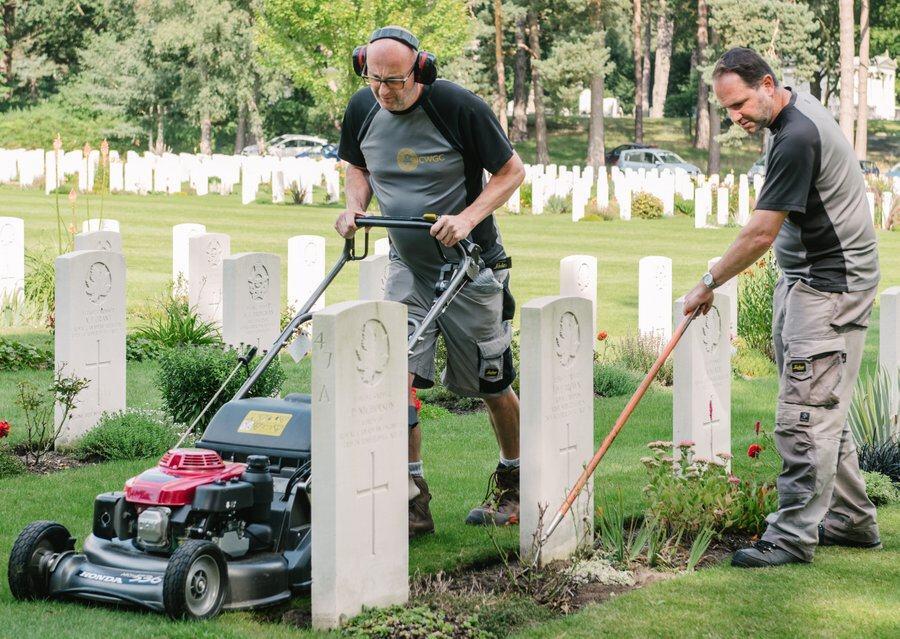
They care for their graves and memorials at 23,000 locations in more than 150 countries and territories and on every continent except Antarctica. The largest CWGC cemetery in the world is Tyne Cot in Belgium with almost 12,000 graves. The smallest cemetery is Ocracoke Island (British) Cemetery, North Carolina, USA with four graves.
The CWGC is the largest gardening organisation in the world – the equivalent of almost 1,000 football pitches are under fine horticultural maintenance. Sixty-five percent of the 1,300 workforce are gardeners.
But the activities of the CWGC are not just passive – maintaining the graves & memorials. They are active too. The organisation has dedicated staff in France and Belgium who recover newly discovered war remains. They are the first to examine them and possibly find clues to their identity before handing them over to the relevant government to be identified. They handle, on average, more than 3 recovery cases a month.

In addition they hold and maintain an extensive records archive, which is revised & updated on a daily basis. Their casualty database contains the names of all the Commonwealth war dead and is accessible through their website.
All of this is paid for by the six Commonwealth member governments (UK, Canada, Australia, New Zealand, South Africa and India) who share the cost of the Commission’s work proportionately to the number of their graves.
What is there to see at the CWGC Experience?
Essentially, the Experience is an anti-clockwise circular tour around their workshops, which starts with a short video overview of their work.
The workshops are grouped around a courtyard and have large windows or glass walls through which you can see the CWGC craftsmen & women at work. On the inside of the courtyard are signs explaining aspects of the work and statistics.
The workshops are numbered, and these numbers tally with an audio guide headset (in multiple languages) that you can use on your tour.
The first workshop is the stonemasons’ cutting and engraving workshop. I must admit I’d never really thought too much about what is engraved on headstones and how they do it. In the workshop they handle, cut and engrave new headstones weighing around 80 kilos each on computer automated benches. They have the capacity to produce & engrave between 20 – 22,000 headstones a year, but they have a new conservation-oriented policy now, which means they actually produce around 3,500 – 4,000 new headstones a year here in the workshop and re-engrave headstones that need it, in situ.
“The stonemasons go out to the cemeteries, sit on a fishing stool straddling the headstone and re-engrave it with what sounds like a dentist’s drill.” says CWGC Experience project manager and Deputy Director France, Gareth Hardware, “and that’s helped us conserve and reduce the amount of stone we use.” Most of that stone comes from Portland in the UK.
The CWGC have a standard for the legibility of headstones – you have to be able to read it from 2 metres away. In one room they have a set of four headstones in declining stages of wear so that you can judge which should be due for re-engraving. Gareth Hardware is clearly proud that they couldn’t find an example of a badly worn headstone in their cemeteries to be the worst example, so they had to shot-blast one to make it look worn!
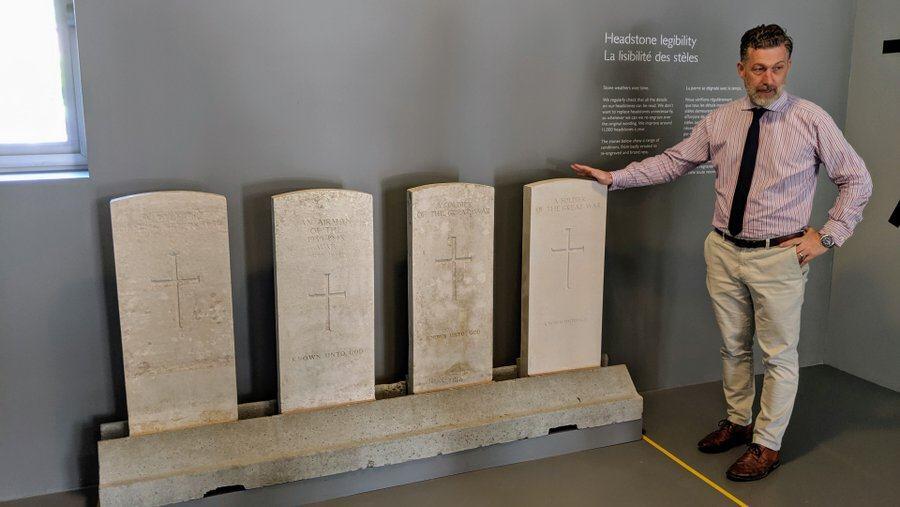
There is some impressive woodwork on display in the carpenters’ workshop, where real skills are demonstrated in the carved wooden signage being produced here, together with heavy wooden doors and mullion windows. No glue. No screws. No nails. These pieces are assembled with perfectly fitted tenon & mortise joints and the occasional wooden plug.
It may be that gardeners out-number the other skilled workers employed by the CWGC (There are 850 gardeners to 160 craftsmen), but that’s for a reason. The bulk of the daily work on the cemeteries and memorials is horticultural; planting, weeding, pruning, re-planting, watering, and mowing…. lots of mowing!¹ And that requires a team of engineers and mechanics to keep hand tools sharp and their machines serviced & operational. The mechanics can be seen hard at work in their workshop, and there are displays of horticultural gear the CWGC gardeners been using over the last century.
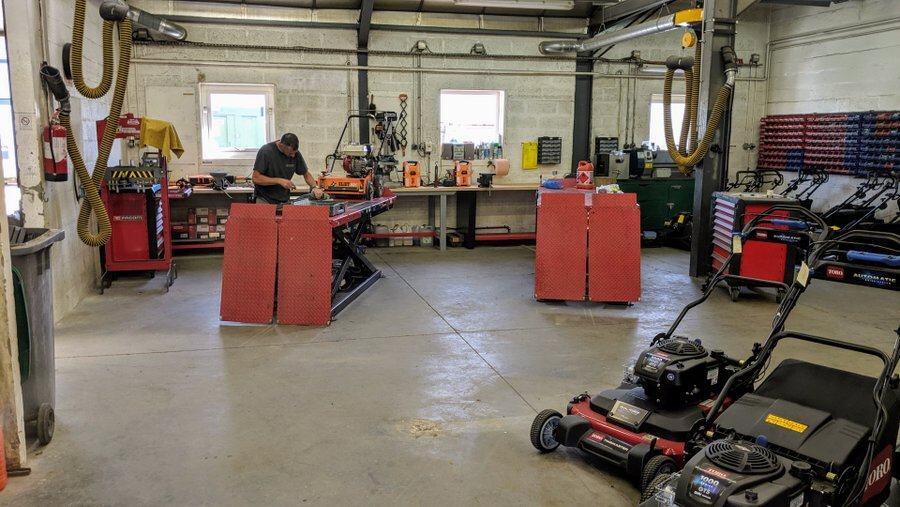
Nearby is a room displaying the work of the recovery/re-burial and forensic teams. The team in France still help local authorities recovering newly revealed dead from the battlefields on an almost weekly basis. The exhibition features artifacts found with bodies that provide clues to the identity, and there’s an excellent video tracing the process from the recovery of the body to the final reburial with full military honours. It demonstrates how the team use historical, archaeological and forensic evidence to identify the casualty, combining military historical research with DNA and genealogical tracing.
The CWGC is fastidious about every detail of their signage in stone, wood, on metal, and even their directional signs². The colour, the font, the spacing… all aspects are detailed, specific and uniform throughout the world, and you get a sense of that when you see their sign-writer in his workshop surrounded by examples of his work.
The last workshop in the circuit is the blacksmiths’ workshop, where anything from ornate gates to the heavy hinges the carpenters use on their doors, are literally forged and hammered out.
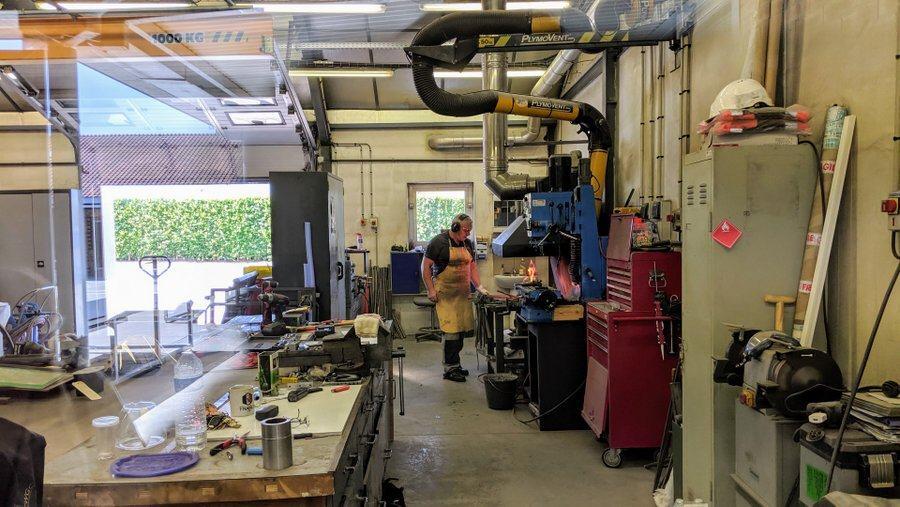
All in all, the CWGC Experience highlights the extraordinary range of skills they can deploy. The only workmen I didn’t see represented were electricians – though I’m sure they are there somewhere!
And here’s a thing…
Cemeteries and memorials are all about the finality and permanence of death. You’d expect, given the calm tranquility of their sites and the passivity of their charges, that the CWGC team’s base would itself feel pretty calm and tranquil, but it doesn’t.
Instead it feels like visiting a fire station while it’s off-duty. It feels like it’s poised to quickly deploy an away team at any moment. It might be in response to a new corpse being discovered (not unusual), or it might be to rescue a cemetary that’s flooded, or to quickly re-turf one that’s suffered a drought, or re-plant one after an unexpected frost, or fix one that’s been vandalised. I used to think of the Commonwealth War Graves Commission as a rather sleepy organisation. Now I think of them as being a bit like Thunderbirds!
¹ 98.2 million square metres of grass is cut in Western Europe every year. That’s 13,758 Wembley Stadiums! At the same time CWGC gardeners are busy trimming 103 miles of hedges and digging 793 miles of borders.
² They even designed their own unique font for the signs in the Experience building!
Declaration: I was visiting the CWGC Experience on a press trip. As usual my views are my own.
Factbox
Website:
Commonwealth War Graves Commission
Getting there: The Commonwealth War Graves Commission
5-7 rue Angele Richard
62217 Beaurains
France
The CWGC Experience is located just south of Arras in the heart of the First World War battlefields. The centre is only an hour from the channel ports and is easily reached by car (public parking is available on site). There are good rail links to Arras.
Entry Price: FREE
Opening Hours:
Open Monday to Friday, 10 am to 4 pm.
Closed at weekends, on French public holidays and during December and January for maintenance

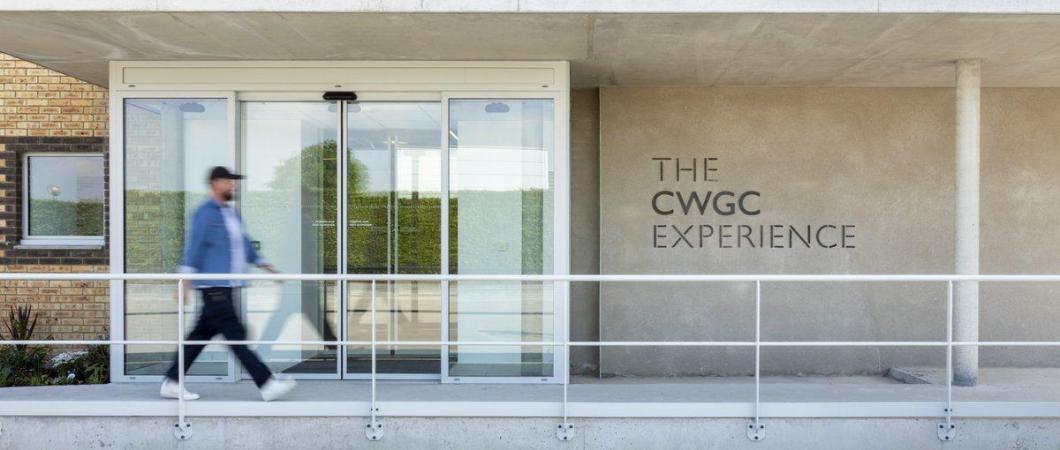
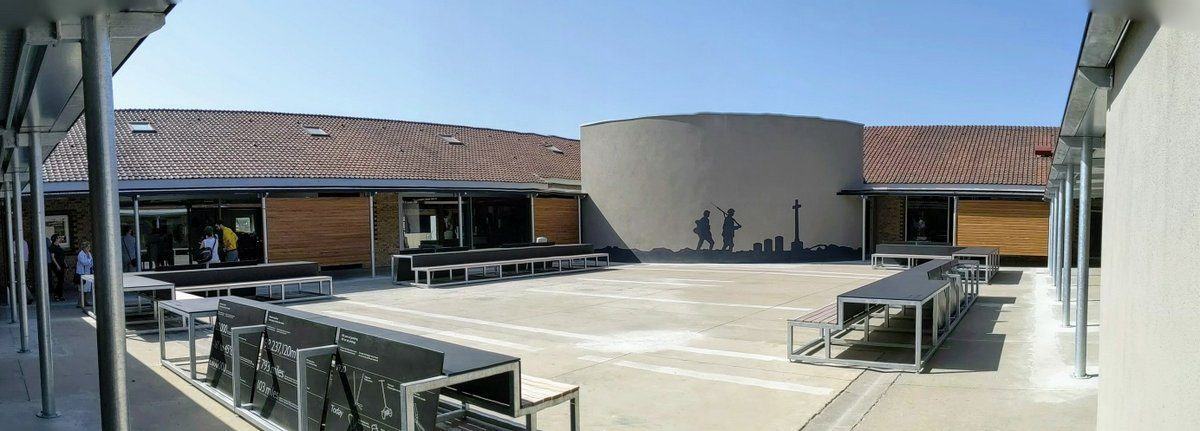
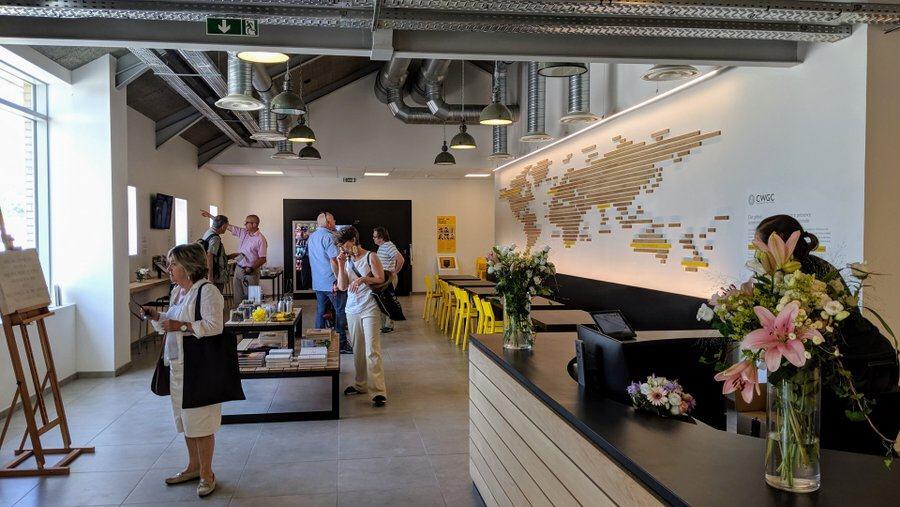
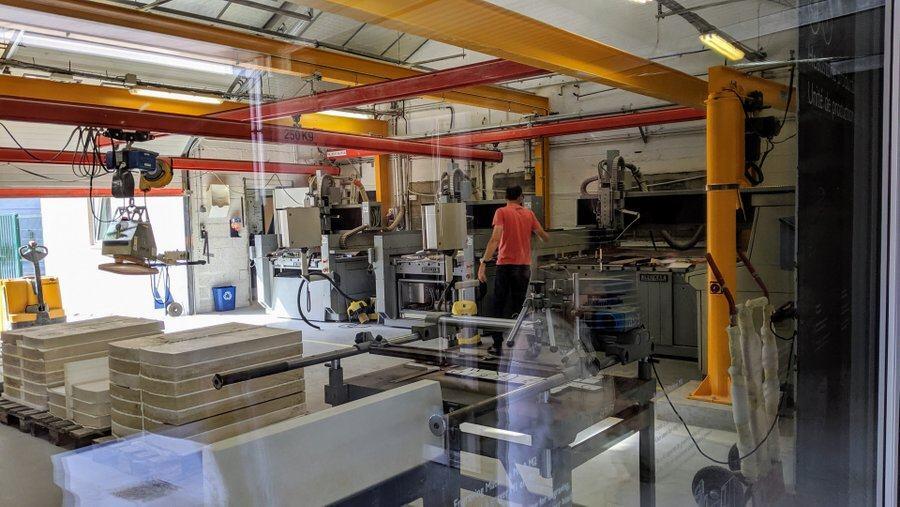

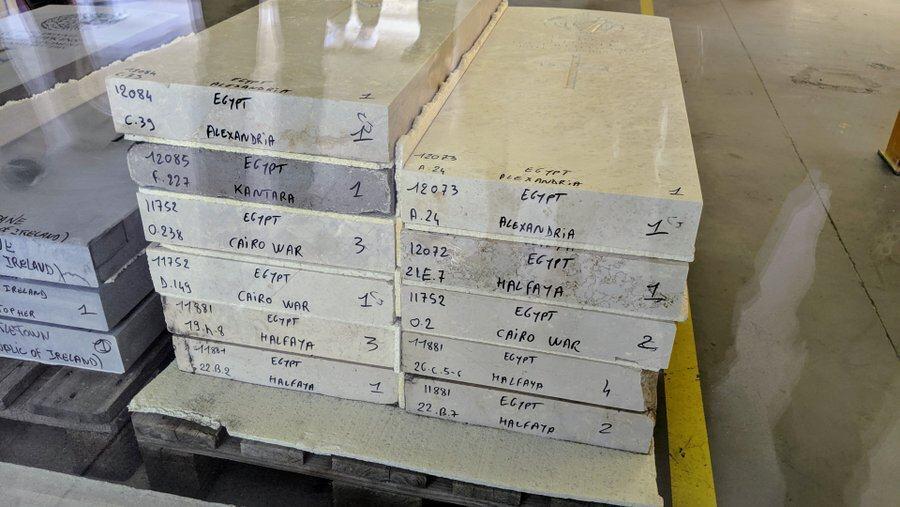
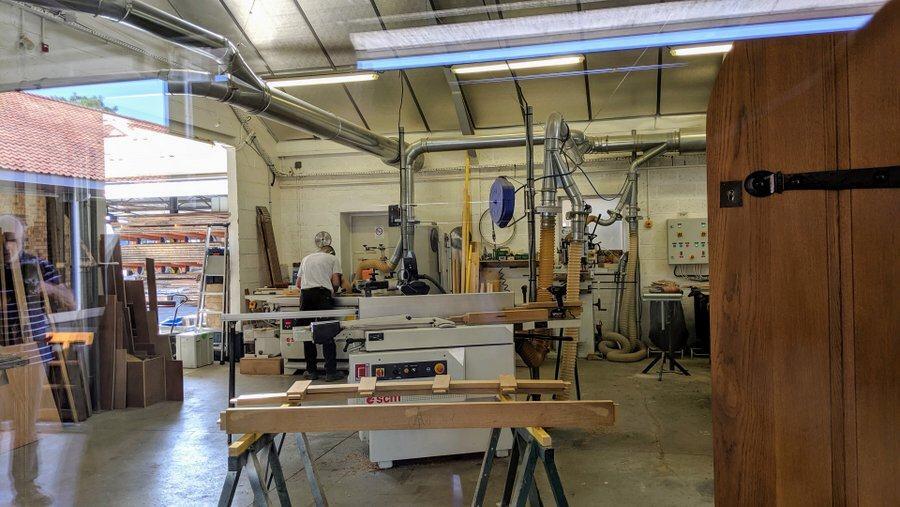
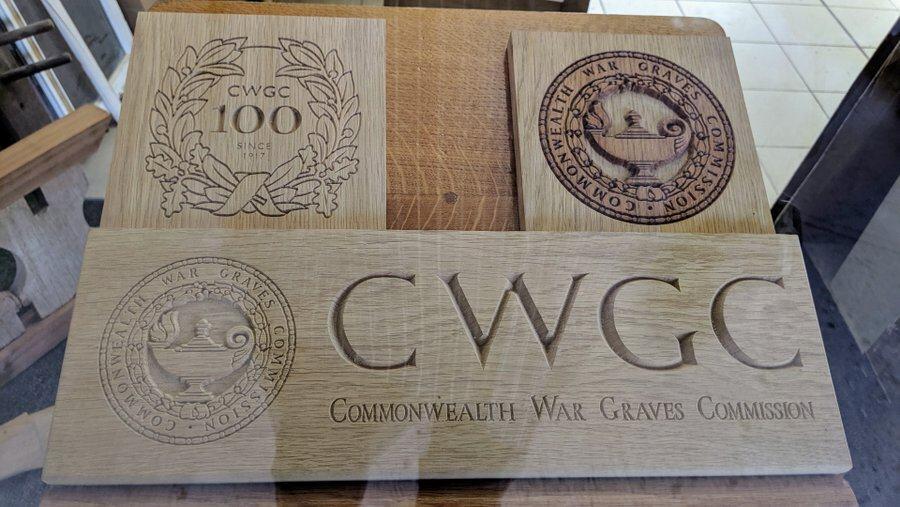


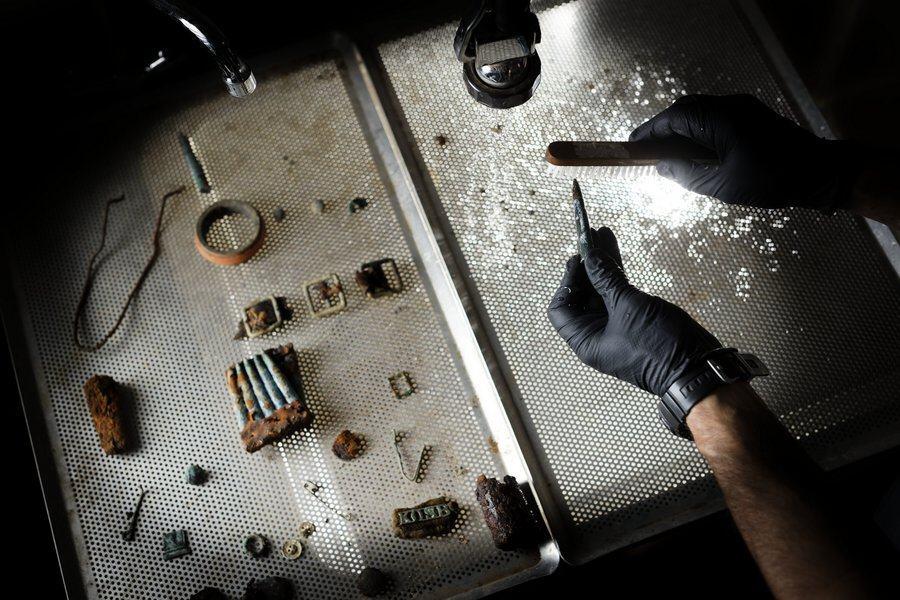
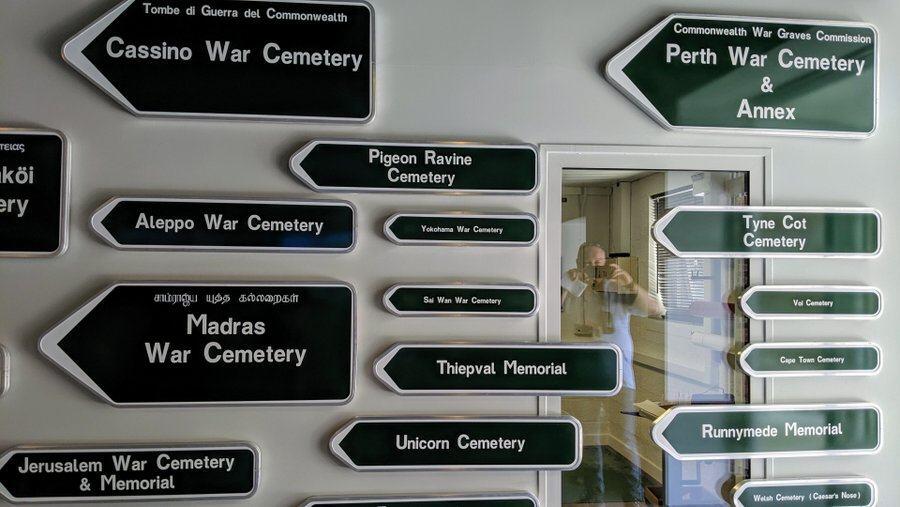
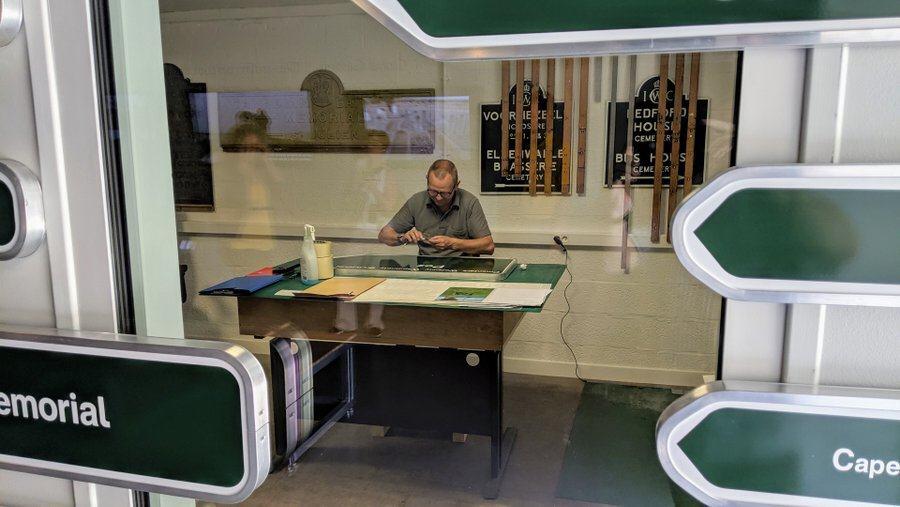
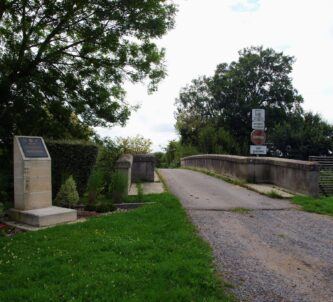



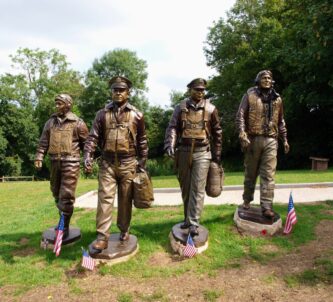

Here’s the latest example of their ceaseless work…
https://www.theguardian.com/world/2019/nov/08/hes-now-at-peace-lost-soldier-identified-and-buried-after-102-years